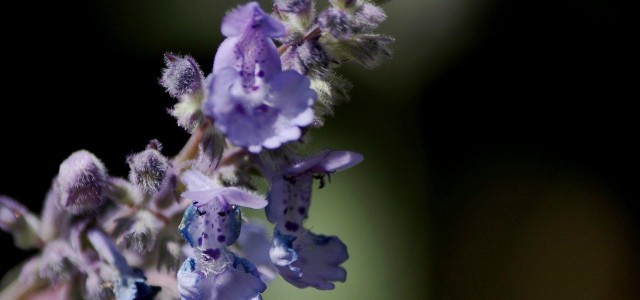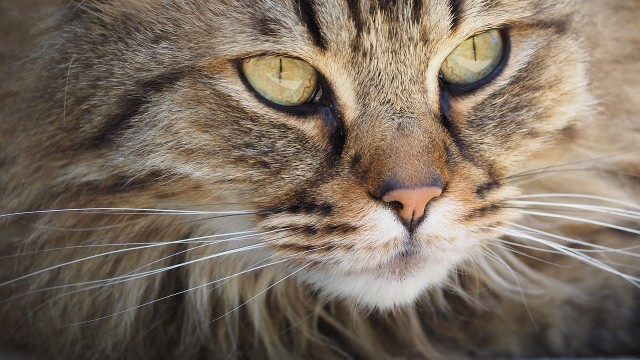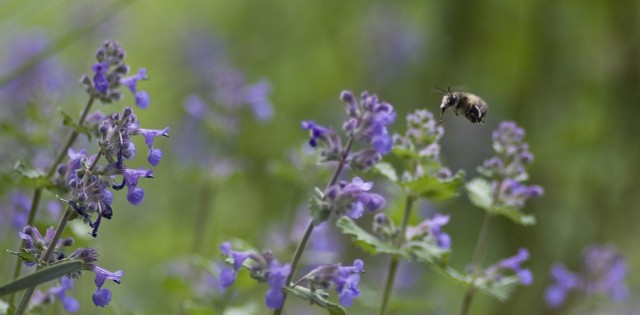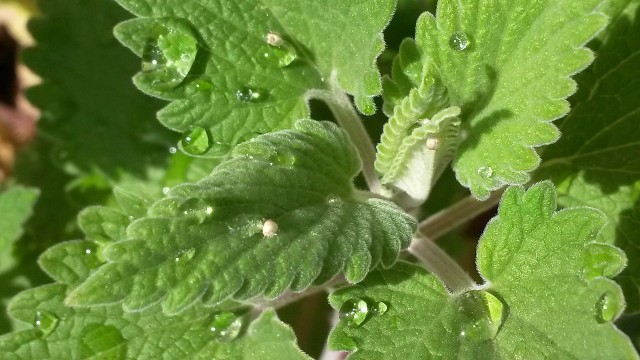
Catnip has a magical attraction to cats. Everything about the effect, cultivation, care and use of the plant can be found here.
Catmint (Nepeta) comes from the labiates family and is a perennial plant that grows up to one meter high. Between July and September, it bears lush white to light blue flowers. Catnip gets its colloquial name because of its scent, which is slightly reminiscent of peppermint and lemon.
For centuries, catnip has been cultivated not only as an ornamental in balconies and gardens, but also as a medicinal plant. Its essential oils in leaves and flowers are said to have a positive effect on colds, among other things. A tea can be easily made from an infusion of dried leaves.
However, the medicinal plant is especially known for its effect on one of the most popular pets: the domestic cat.
Contents
Effect of catnip on house cat

Cats – whether they are neutered or not – are magically attracted to the scent of catnip. Its smell has a beguiling effect on the animals. The little four-legged friends rub themselves against the plant, roll around in it or nibble on it.
For cat owners:inside the cultivation of catnip has some advantages:
- Catnip increases the cat’s play instinct and enhances its general well-being. Especially cats that are only kept indoors can be encouraged to exercise more.
- A scratching post rubbed with catnip can keep the cat from sharpening its claws on unwelcome places like the wall and sofa.
- If the cat needs to go to the vet’s office, catnip can help. Just add some catnip to the carrier. The essential oils of the plant calm the animal.
- The “white-flowered true catnip” variety (Nepeta cataria) seems to be particularly attractive to animals. Its blue-flowered relative, on the other hand, is apparently less powerful in its effect.
The high attraction to cats is attributed to two particular ingredients of catnip:
- Catnip contains an alkaloid called actinidin. The same substance is excreted by sexually mature female cats in their urine to attract male cats. Catnip therefore has a particularly stimulating effect on male cats of sexually mature, middle age. But females are also stimulated by the plant. Very young or very old cats, however, the plant is less appealing.
- In addition, catnip contains the pheromone nepetalactone. Depending on the intensity and dose, this has a mild sedative and euphoric effect, similar to that of a mild opioid.
- However, the cat also benefits the plant in the opposite way, thanks to a trick of nature: similar to bees and other insects, the cat is a disperser of pollen and thus ensures the continuity of catnip. When the cat rolls in the plant, small so-called clauses fruits get stuck in its fur. These later fall out of the fur onto the ground in various places. This is how the plant’s genes are spread.
By the way: catnip does not only have a beguiling effect on our domestic cat. Big cats like tigers and lions also react positively to the plant.
Cultivation of catnip

If you want to do something good for your pet, you can easily grow catnip yourself. Cultivation succeeds both in the garden and on the balcony. The plant is easy to grow and very easy to care for.
Cultivation of catnip
You can buy numerous varieties of catnip in garden stores or online.
- Ideally, you should start sowing the perennial plant in spring after the last frost.
- You can use cuttings or seeds.
- A single plant is usually sufficient for this purpose: once it has successfully established itself in the garden, it will spread all by itself in various ways. Catmint is both self-pollinating and a magnet for numerous insects that carry its pollen.
The right location
Catmint prefers to grow in a sunny spot with a poor to nutrient-rich, well-drained soil. The plant also tolerates a sandy soil well.
Care of catnip
The perennial tolerates short dry periods better than too much wetness.
- Now and then you can pamper it with some organic fertilizer.
- After the main bloom in midsummer, it is good for the plant if you cut it generously down to ground level. This way you can encourage it to bloom a second time in late summer and strengthen its growth.
- If the plant spreads too much, pruning is also recommended.
Use of catnip

To use as a scent marker, you can dry catnip leaves and flowers and rub them on your cat’s objects or toys.
Note, however, that not every cat reacts equally to every type of catnip. With a little trial and error, you’ll quickly find out which variety your pet likes best.
By growing catnip, you are not only spoiling your beloved pet. You are also providing important food for bees and numerous other beneficial insects. And by the way, with the decorative plant you provide a beautiful blaze of color in the garden or on the balcony.

